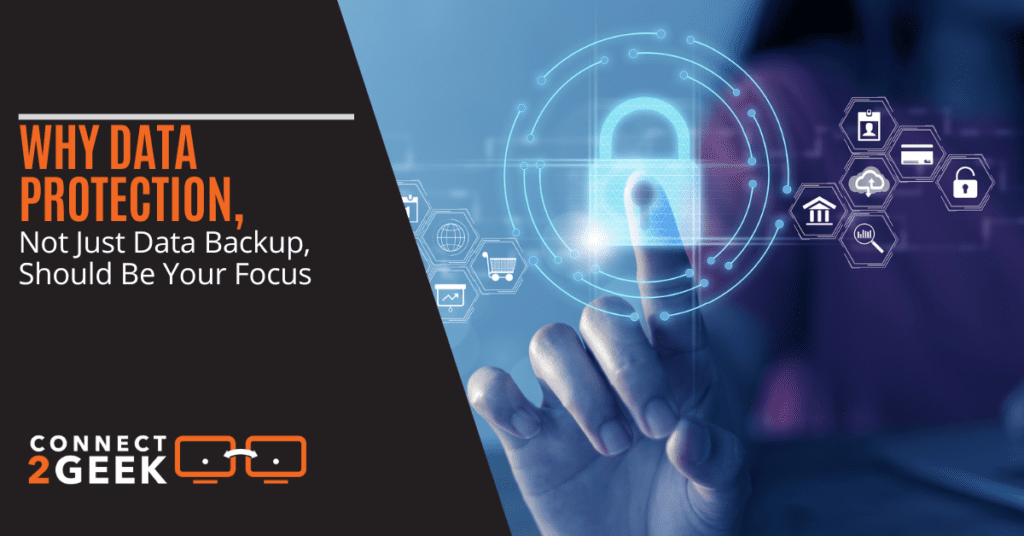
Are you only focusing on data backup and ignoring data protection? Think again! Data protection is more crucial than ever, with rising attacks, human error, and software bugs.
Data protection and data backup are often used interchangeably, but they are not the same. Data protection refers to the measures taken to ensure data confidentiality, integrity, and availability. In contrast, data backup is copying and storing data in a separate location for disaster recovery.
A survey by pew research shows that 81% of Americans are skeptical about the security of the data collected by companies. Hence, to build the trust of your clients, you must put up enhanced security to protect the information released to you. Data protection measures will be more effective in this rather than a backup
Backing up files is the first step to an efficient data management plan. When there is a system malfunction or data loss, it becomes easier to fall back on your backed data to get your operations back running. However, Backing up becomes incapacitated when the cyber attackers have access to the business’s sensitive information or clients that you may not want to be released to the public. This is where data protection becomes more critical and efficient as it guarantees you more protection than just backing up your data.
This article will explore why data protection should be the primary focus for organizations and individuals rather than just data backup.
Why You Should Focus More on Data Protection
Data protection has many advantages over a mere backup of data. The following are reasons why you should focus on data protection.
Data Protection Addresses a Broader Range of Potential Threats Than Data Backup.
While data backup primarily protects against data loss due to hardware failure or natural disasters, data protection encompasses a broader range of threats, such as cyberattacks, human error, malware, and software bugs. These threats are becoming increasingly common and can severely affect organizations and individuals.
Data Protection Is More Proactive Than Data Backup.
Implementing data backup is a reactive measure taken only after data has been lost. On the other hand, data protection is a proactive measure implemented to prevent data loss from occurring in the first place. Organizations and individuals can significantly reduce the likelihood of data loss by implementing protective measures.
Data Protection Is More Cost-Effective Than Data Backup.
To manage the backups, data backup requires significant resources, including storage space and personnel. On the other hand, data protection can often be implemented at a lower cost by leveraging existing security measures and technologies. Additionally, the cost of data loss can be much greater than the cost of implementing data protection measures, making it a more cost-effective approach in the long run.
Data Protection Is Increasingly Important In Today’s Digital Age.
Data protection is becoming more critical due to the rise of cloud computing and the internet of things (IoT). As more and more organizations and individuals store their data in the cloud and connect to the internet, they expose their data to a broader range of potential threats. Data protection measures such as encryption and access control are essential for protecting data in these environments.
Data Protection Ensures Compliance.
Many industries and countries have regulations that require organizations to protect sensitive data. For example, the EU’s General Data Protection Regulation (GDPR) requires organizations to implement suitable technical and organizational measures to protect personal data. Organizations can ensure compliance with these regulations and avoid fines by focusing on data protection.
Steps To Achieving Data Protection
Organizations and individuals can achieve data protection through technical and organizational measures. Some key steps that organizations and individuals can take to protect their data include:
Encryption
Encrypting sensitive data can help protect it from unauthorized access and disclosure. Various encryption methods can achieve this, such as full-disk, file-level, and database encryption.
Access Controls
Implementing access controls can help ensure that only authorized individuals have access to sensitive data. This can include user authentication, authorization, and role-based access controls.
Firewalls And Intrusion Detection/Prevention Systems
These can help protect against unauthorized access to an organization’s network and systems.
Backups
Backing up data regularly can help ensure that it can be recovered in the event of data loss. This should include both on-premises backups as well as cloud-based backups.
Risk Assessments
Regularly assessing an organization’s data risks can help identify potential vulnerabilities and areas for improvement.
Incident Response Plan
Having the plan to respond to security incidents can help ensure that data is protected during a security breach.
Compliance
Organizations must be aware and compliant with regulations such as GDPR, HIPAA, and others that might apply to their operations.
It is important to note that data protection is an ongoing process and regular review and updates to security measures are necessary to ensure that data remains protected.
Ready to Protect all your data?
Connect2Geek can help you set up efficient data protection for your organization and guide you in creating enhanced security.
Schedule a free consultation with us today! Call us on Call 208-468-4323 or reach out online.
